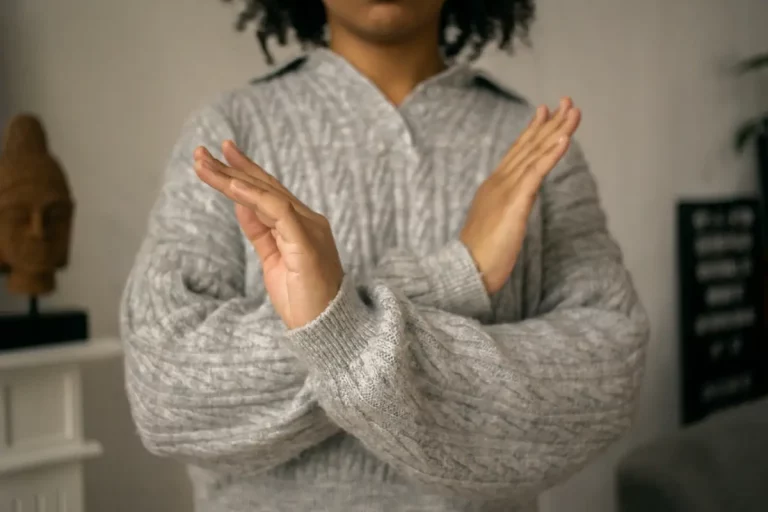9 Tips For Delivering A Stellar Case Presentation Interview
A Case study interview is a staple in the recruitment process for firms in the professional services industry, particularly management consulting firms. But recently, many companies use what is called a “case presentation interview” to test more than just the candidate’s ability to crack a case.
In the past, case presentation interviews (usually the second or third in the interview series) were commonly used in the hiring process of associate-level employees, mostly for working directly with business clients and offering billable services.
Recently, case presentation interviews are used for analyst-level employees in many healthcare, tech, and e-commerce consulting firms.
In this article, you will learn what skills a case presentation interviewer is looking for, the biggest challenge of a case presentation interview, the major tips you can use to ace your case presentation interview and land your dream job! + a bonus Insightful video with tons of examples for consulting case interviews.
What is a case presentation interview?
Also called a case study presentation interview is an advanced phase of the interview process where the interviewee is asked to solve a business problem, given little time and information about the problem. Generally, the case is presented to the hiring manager and his peers.

Case Presentation Interviews usually follow this process:
- A packet of information that contains the prompt and data is handed to the candidate
- Then he/she is given some time (either on-site at the firm or his/her home) to review this information and create a presentation of their insight (either using PowerPoint or manually)
- The candidate then presents their findings or insights to the interviewer(s)
- The interviewer(s) would then ask questions during and after the presentation.
What skills are the interviewer looking for during a case presentation interview?
- Problem-solving skills
- Presentation (and PowerPoint) skills
- Verbal reasoning skills
- Communication skills
- Collaborative skills
- Business skills
In most cases, case study presentation interviews expose these skills in a way that traditional case interviews cannot.
The ultimate goal of the interview is not necessarily to see if the person being interviewed can solve the business problem (although, very important), but to see if they can think on their feet, reason like a consultant, communicate their insights effectively before clients and/or the CEOs.
A case presentation is also very important to see if the numbers they produce are both logical and valid.
A case presentation interview is an interviewee’s opportunity to prove to their interviewer that their soft skills and analytical skills are relevant within a realistic business context.
There are always maths problems in case presentation interviews, and the interviewer expects that he/she is walked through the problem-solving and decision-making process.
In many firms, the case presentation interview is often carried out as a group assessment exercise. When this happens, the candidates are handed briefing materials about a business issue, then asked to collaborate, discuss and proffer a solution to the issue. While this goes on, the interviewer(s) sit silently and watch as silent observers.
This form of interview is used to assess the candidates’ commercial awareness, analytical thinking, communication skills, and collaboration skills.
Highly Recommended Next Articles to Read:
What makes a Good Job Interview Presentation?
10 DOs and Don’ts for Job Interview Presentations
Communication Skills GUIDE: All you Need to Know to Improve it (opens in a new tab)" rel="noreferrer noopener" class="rank-math-link">Communication Skills GUIDE: All you Need to Know to Improve it
What is the biggest difficulty in case presentation interviews?
Time management tops the list of difficulties that would be faced during a case presentation interview. The firm often provides the interview candidate with a large set of data and extrinsic information.
It would be a complete waste of time if the candidate tries to read through the details. It is much wiser for the candidate to form an opinion first and fast, and then find the data that is needed to support their thought.
9 Tips on how to deliver an excellent Case Presentation Interview
- Polish your “mental math” skills before the interview
- Use traditional case interview prompts as practice interviews
- Keep up with the industry and research the firm
- You must use structure just the same way it would be used in a regular case interview
- Take advantage of the case interview structure
- Don’t be scared if you get stuck
- You must remain confident as you deliver your presentation
- You must skillfully manage the limited time they have
- If you’re in doubt, reschedule the interview
- Polish your “mental math” skills before the interview:
You have to prepare extensively for your case presentation interview, and one of the ways you can do this is by brushing up on your mental maths skills.
The chances you are given a calculator for a case presentation interview are very low, and you want to make sure that you can solve addition, subtraction, division, and multiplication problems without using a calculator.
You can do this by randomly giving yourself a short but budgeted time to solve semi-difficult maths problems without using a calculator.
- Use traditional case interview prompts as practise interviews:
You can use information from case books as practice just so that can get ahead of the curve. It would also be wise for you to extract just the prompt and data as many case books already come with answer keys.
We recommend that you get a friend or a “study buddy” who is quite knowledgeable about case presentation interviews to help you through this process.
- Keep up with the industry and research the firm:
Be fully aware of new industry trends because you never know what industry your case presentation interview question may come from.
There are three things you can do to help yourself:
- First, keep a tab of the attributes specific to certain industries (e.g., in the airline industry, the travel classes are different, significant driver costs include union and fuel, and there is high market competition on pricing).
- Second, be current with business news; the economist, Harvard business review are two magazines you might want to pay monthly attention to stay informed on the major company and industry trends.
- Thirdly, everybody knows that researching the firm they are applying to is the biggest key to landing their dream jobs. But the more the interviews, the more the information you need to know about the firm, and case presentation interviews are usually the third in the recruitment process.
While case presentation interviews are not held like traditional interviews where the interviewer and candidate discuss extensively, it is still important to know as much about the firm as you can find.
The amount of knowledge you have acquired about the company will help you discover their style and know their archetypes. You would be able to solve the business issue in a way that they normally would recommend.
- You must use structure just the same way it would be used in a regular case interview:
This is probably the most important point. Using structure will save you a lot of time during the interview process.
You can use these four easy steps to create structure:
- Create an issue tree, using it as the basis for your structure.
- Ensure the issue tree is MECE (Mutually Exclusive and Collectively Exhaustive)
- Concentrate on and prioritize high impact issues
- For your conclusion, use the pyramid principle.
Ensure that you think properly about the framework that you need to include in the key categories. You also need to think properly about the data that would be needed to test the hypothesis.
Although it is said often that some of the best candidates create their unique framework for each case, here are examples of common frameworks that can be trusted and used:
- The Pricing Framework
- The Profitability Framework
- The 4 P’s (Product, Price, Promotion, and Place)
- The 3C’s (Companies, Customers, Competitors) + Business Situation Framework
- New Product Framework
- New Market Framework
- Mergers and Acquisition (M & A) Framework
- Porter’s Five Forces
Regardless of the choice of framework or data, ensure all your steps are logical and that your thought process flows unhindered.
- Take advantage of the case interview structure
Unknown to many case presentation interview candidates, a case presentation interview question packet already has all the data that they need right before their faces- this is one of the biggest advantages of case presentation interviews.
Most traditional case interviews pose as difficult because the relevant data has to be mined; this is not the case for case presentation interviews, the limited information supplied to the interviewee contains everything they need. Once you form your hypothesis, you can cut right to the chase and start testing instantly to see what direction you should head towards.
- Don’t be scared if you get stuck
If you feel like anxiety is taking over because you’re stuck, during the case presentation interview, do the following:
- Relax, take a deep breath, and drink some water.
- For a minute or two, close your eyes and see the bigger picture with clarity- think about the information that you have and the information that you need. Scribble the information you need on a working sheet and outline how you can acquire this information.
- Check to see if the information or data that was given to you has new relevance
- You can think out loud: this will help you air your thought and structure your thought process.
- You must remain confident as you deliver your presentation
While you might have put in all the hard work in preparation and creating their presentation, it would be an absolute waste of effort if you deliver the presentation shakily.
As mentioned above, the interviewers are not solely looking to see if you proffered a solution to the business problem, they’re also assessing and judging your confidence, they want to see how you would perform in a real consulting scenario. Practice public speaking often to prepare for the presentation stage of the case presentation interview.
- You must skillfully manage the limited time they have
It is highly recommended that you budget your time into small task portions. As mentioned above, the most difficult part of a case presentation interview is time management. Properly allocate time for each task during the interview process.
Just so you know, whether the allotted time is 30 minutes or 2 hours, it would go by very quickly, hence the need for a time budget. Interviewers often understand the limited time constraints, but you must move on from spending your time analyzing the information and draw out their presentation quickly.
- If you’re in doubt, reschedule the interview
Rescheduling should be used as a last resort, but if it needs to be done, suggest an alternative day by yourself and make sure you only reschedule once.
If you are not fully prepared for your case presentation interview or your confidence is generally low about your chances of acing it. You can contact the firm and inform them that you need to reschedule without giving out too many details.
Transparency is an impressive quality to many firms, and they would be impressed by your honesty.
Case Interview for Beginners Video
M Consulting Prep has a simple, easy to understand, and comprehensive 13 min video for beginners on case interviews. Titled: Case Interview 101 – A great introduction to Consulting Case Study Interviews. I highly recommend it for getting examples of case interviews logic, structure, etc.
To Wrap Up
Case Presentation interviews are genuinely hard for many candidates, and cramming for this type of interview is definitely out of the question.
Regardless of how difficult it may seem to be, relax, and have fun with it. As long as you did your best to fully prepare, leaving no stone unturned, you will be fine.
At the end of the process, the interviewer would identify some of the many great traits you possess, such as your business intuition skills, communication skills, and analytical acumen.
With this, chances are very high that both you and the firm reach a mutual realization and an agreement if the firm and the role are great for you.
We hope that this article has helped simplify the preparation process – one way or the other. Check back soon for more tips and guides on a similar subject matter.
References and Further Reading
Management Consulted. Case Presentation Interview: The new Style of Case Interviews
Case Interview: Improving Case Interview Presentation Skills








